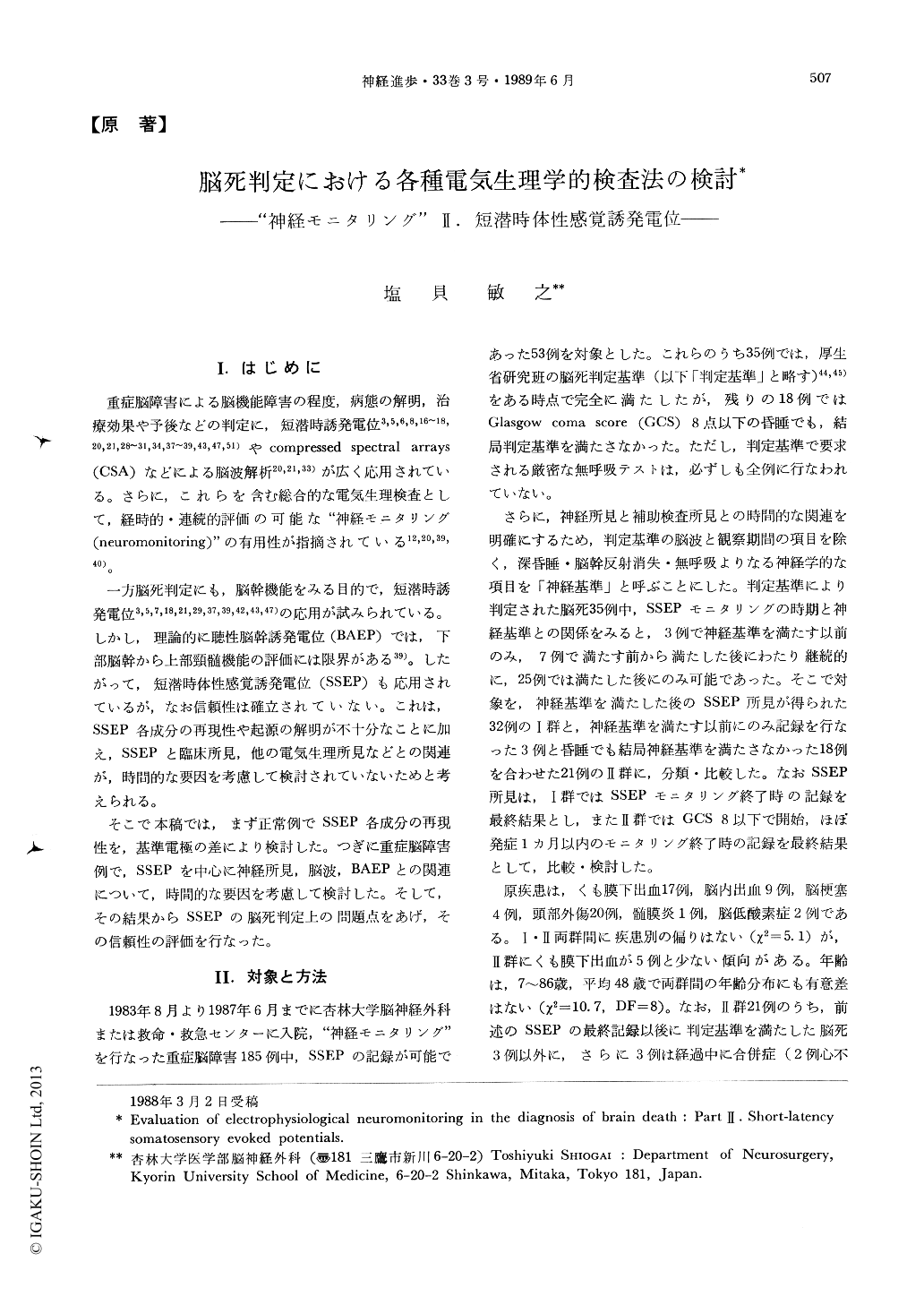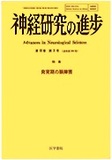Japanese
English
- 有料閲覧
- Abstract 文献概要
- 1ページ目 Look Inside
I.はじめに
重症脳障害による脳機能障害の程度,病態の解明,治療効果や予後などの判定に,短潜時誘発電位3,5,6,8,16〜18,20,21,28〜31,34,37〜39,43,47,51)やcompressed spectral arrays(CSA)などによる脳波解析20,21,33)が広く応用されている。さらに,これらを含む総合的な電気生理検査として,経時的・連続的評価の可能な"神経モニタリング(neuromonitoring)"の有用性が指摘されている12,20,39,40)。
一方脳死判定にも,脳幹機能をみる目的で,短潜時誘発電位3,5,7,18,21,29,37,39,42,43,47)の応用が試みられている。しかし,理論的に聴性脳幹誘発電位(BAEP)では,下部脳幹から上部頸髄機能の評価には限界がある39)。したがって,短潜時体性感覚誘発電位(SSEP)も応用されているが,なお信頼性は確立されていない。これは,SSEP各成分の再現性や起源の解明が不十分なことに加え,SSEPと臨床所見,他の電気生理所見などとの関連が,時間的な要因を考慮して検討されていないためと考えられる。
Electrophysiological neuromonitoring by using short-latency somatosensory evoked potentials (SSEP), brainstem auditory evoked potentials (BAEP), and compressed spectral array (CSA) EEG can provide precise and immediate information concerning the functional integrity of the cerebrum, brainstem, and upper spinal cord in cases of severe brain damage12,16,20,37~40).
This neuromonitoring system was applied to 53 severely brain-damaged patients in order to evaluate its reliability, and particularly that of SSEP, in the diagnosis of brain death.

Copyright © 1989, Igaku-Shoin Ltd. All rights reserved.


